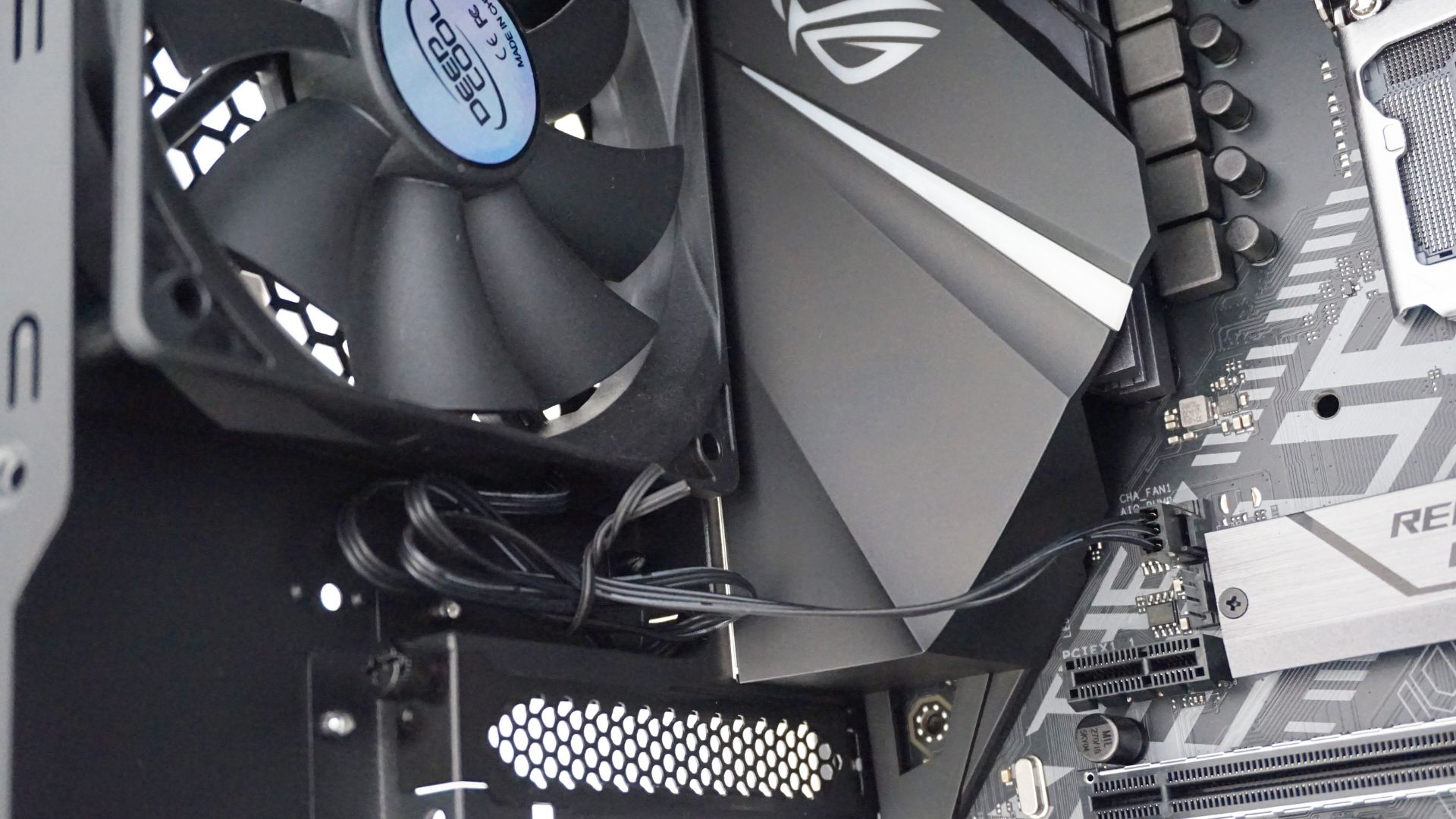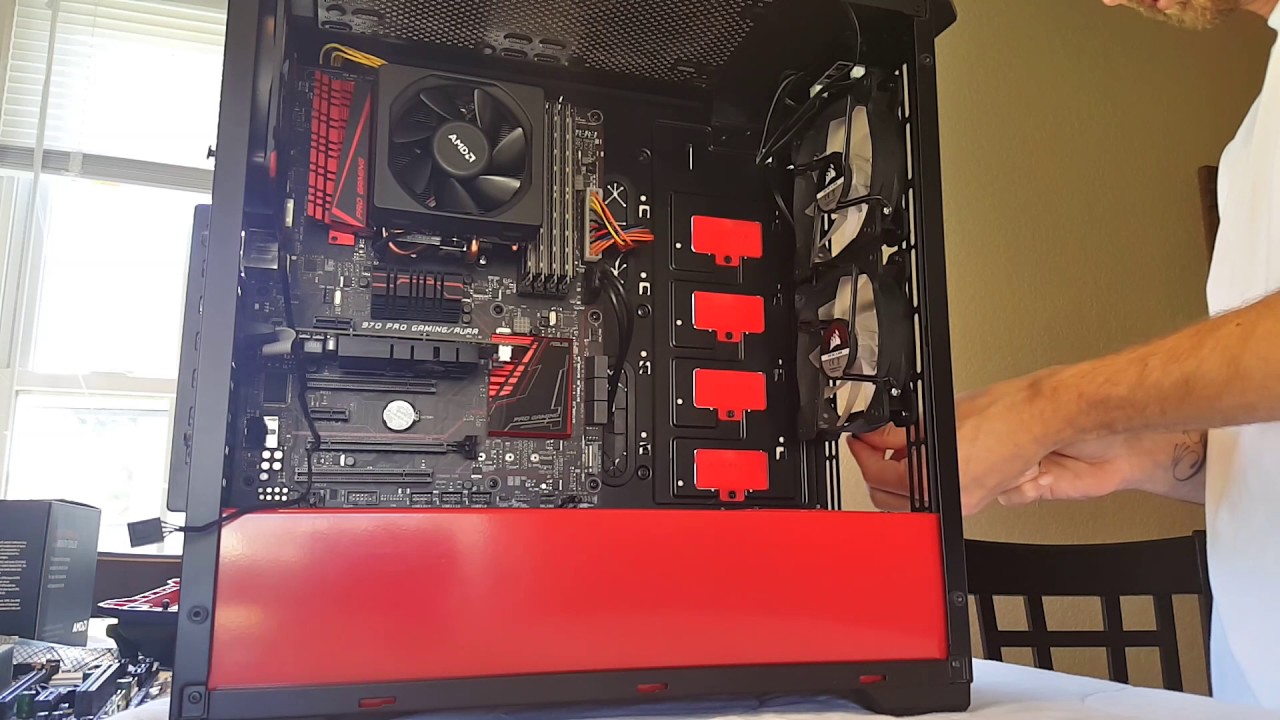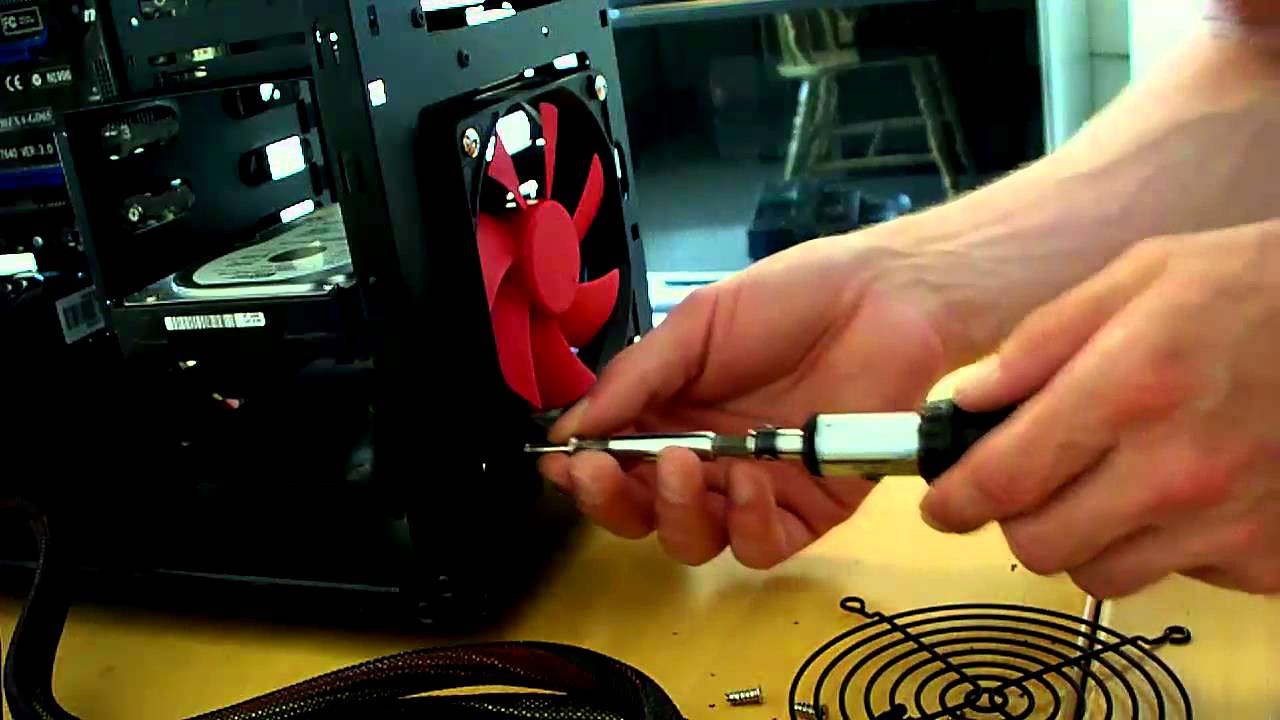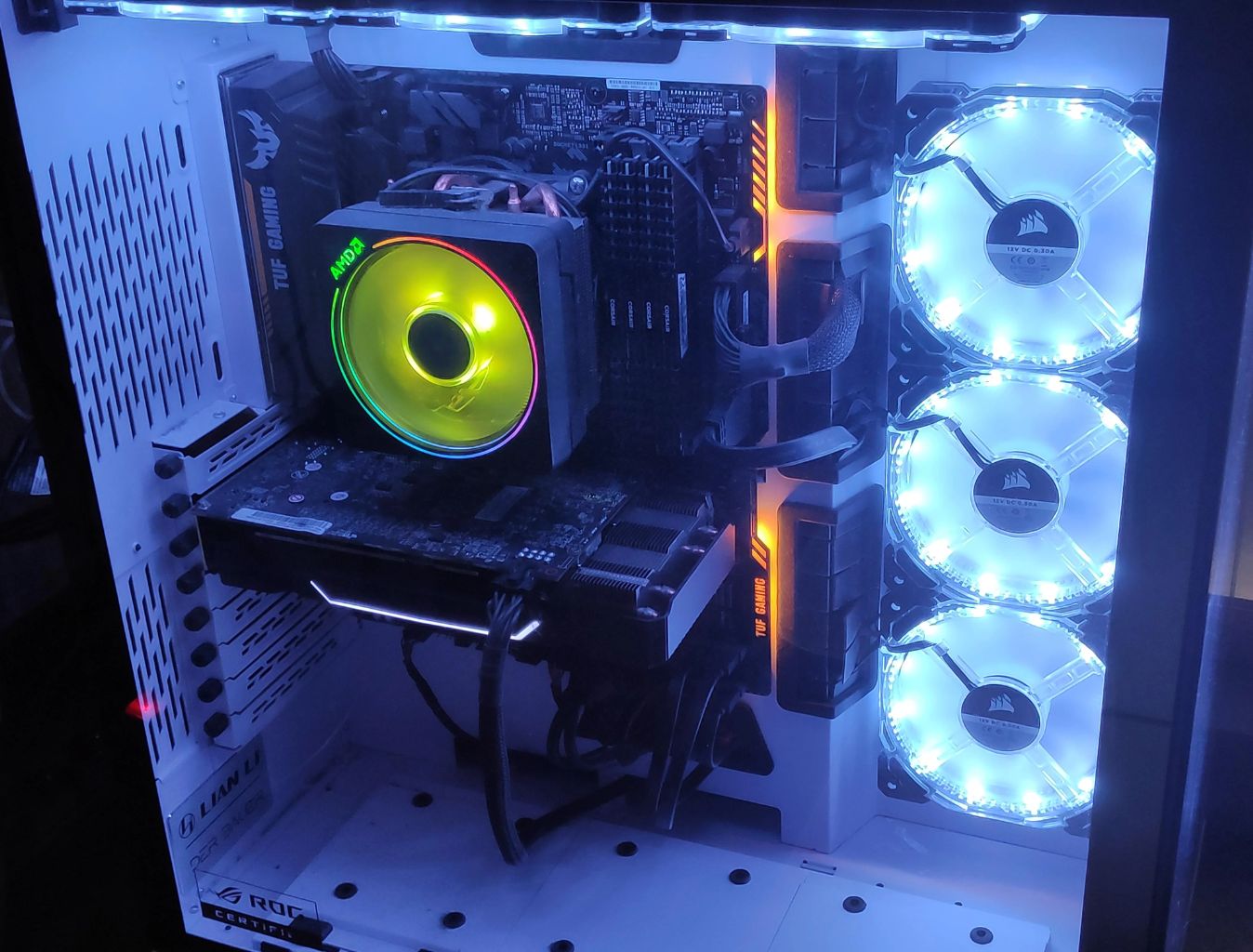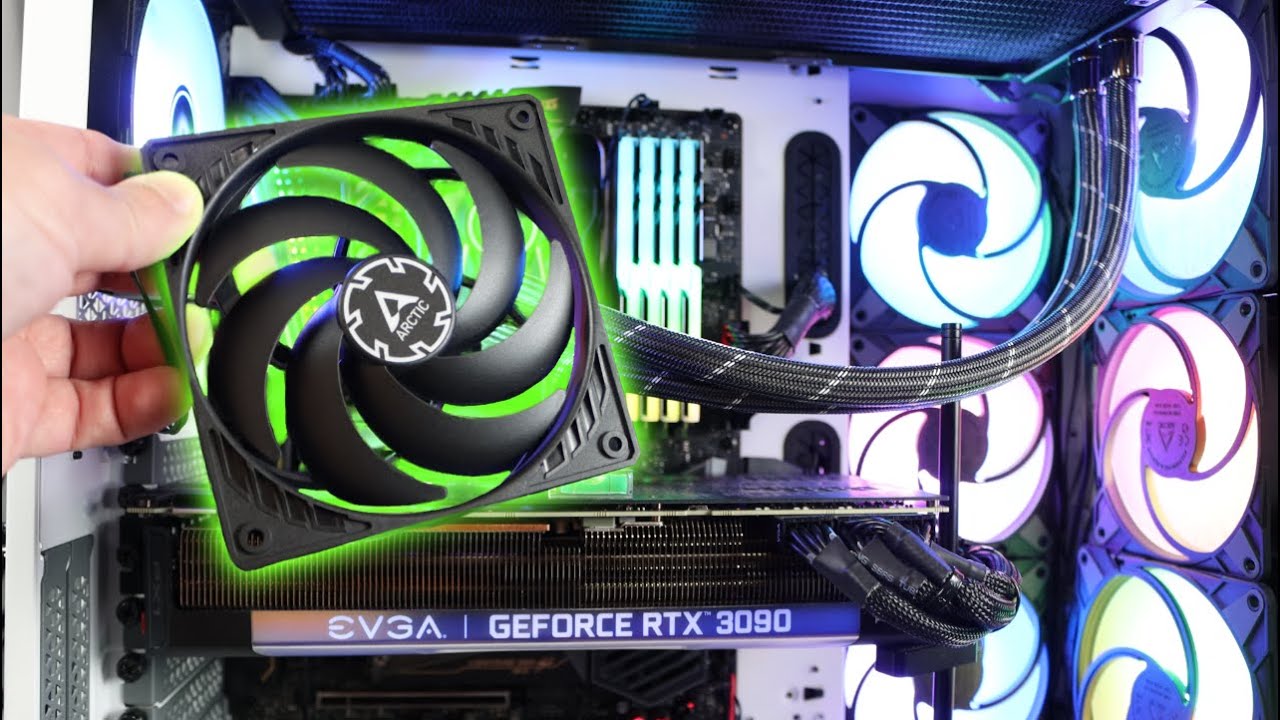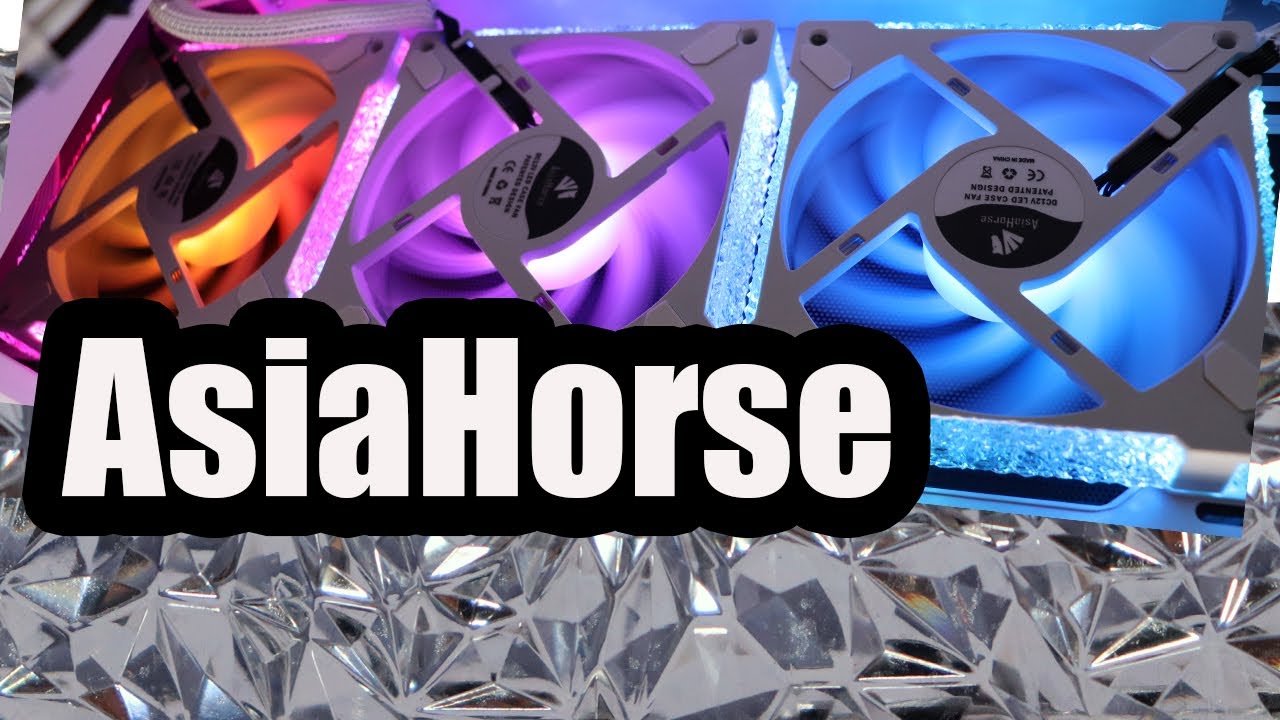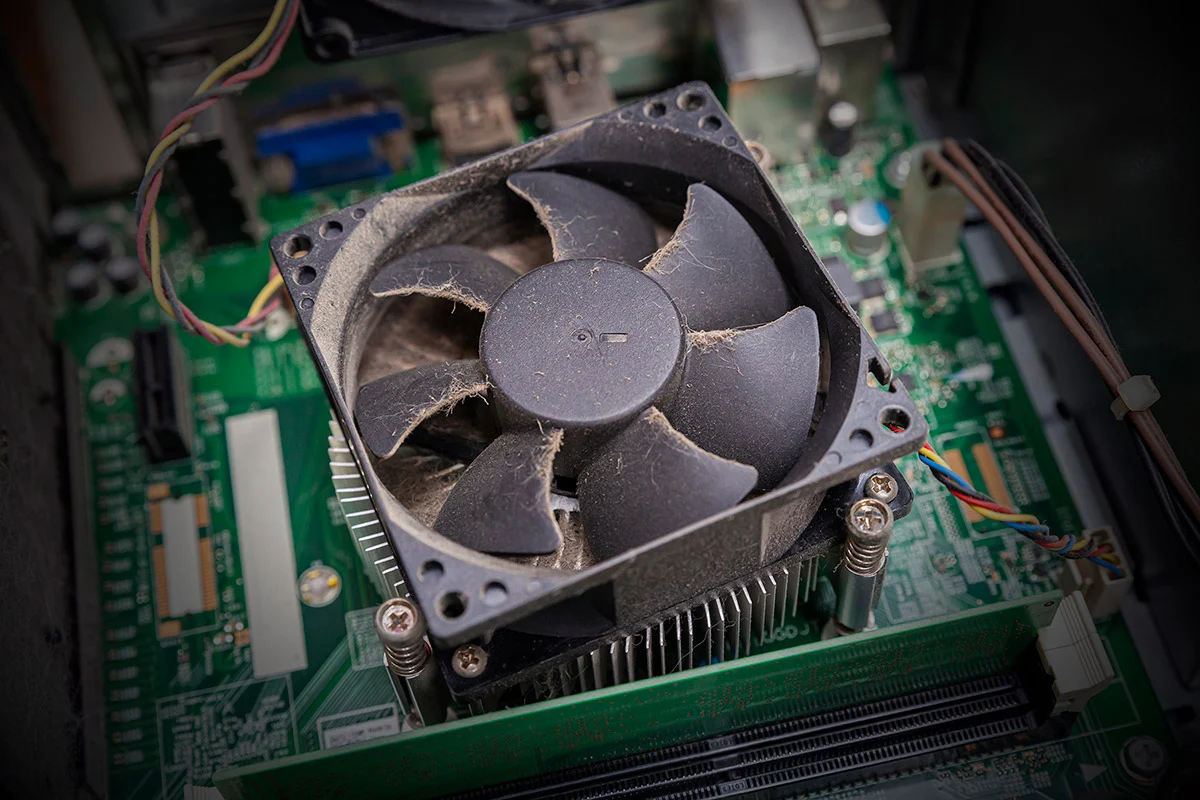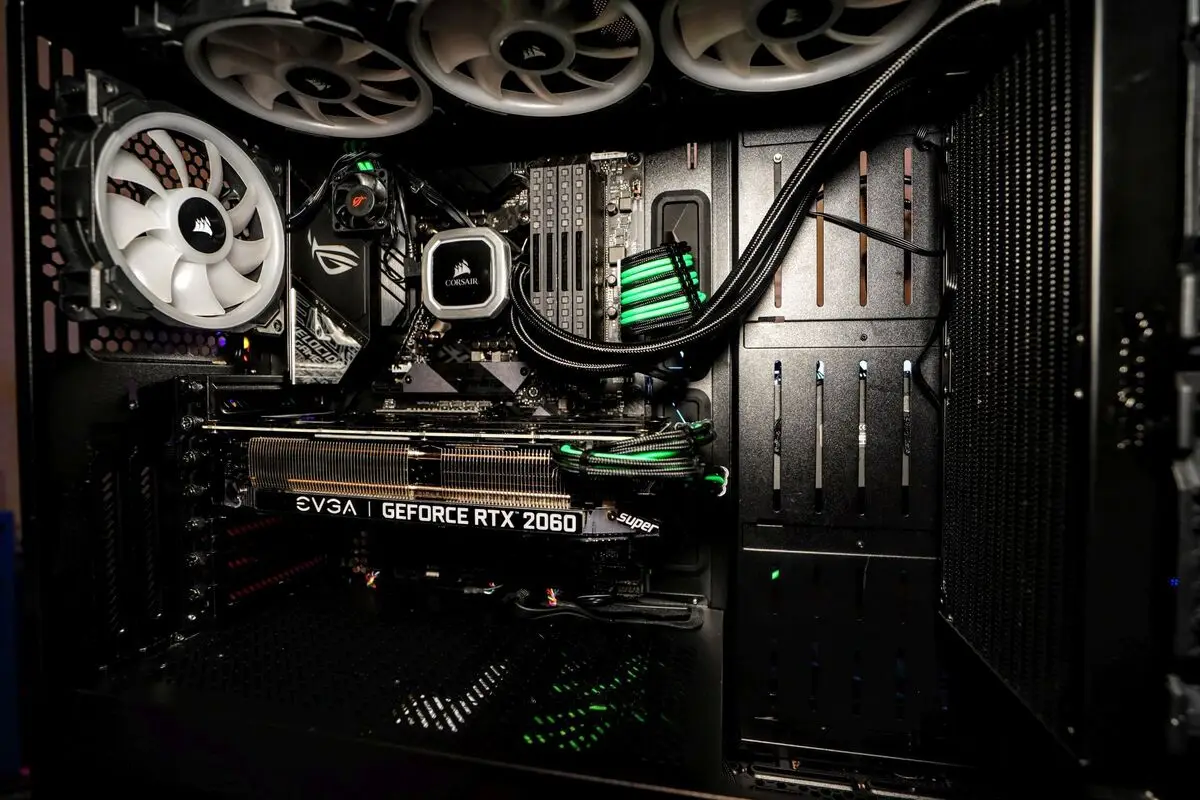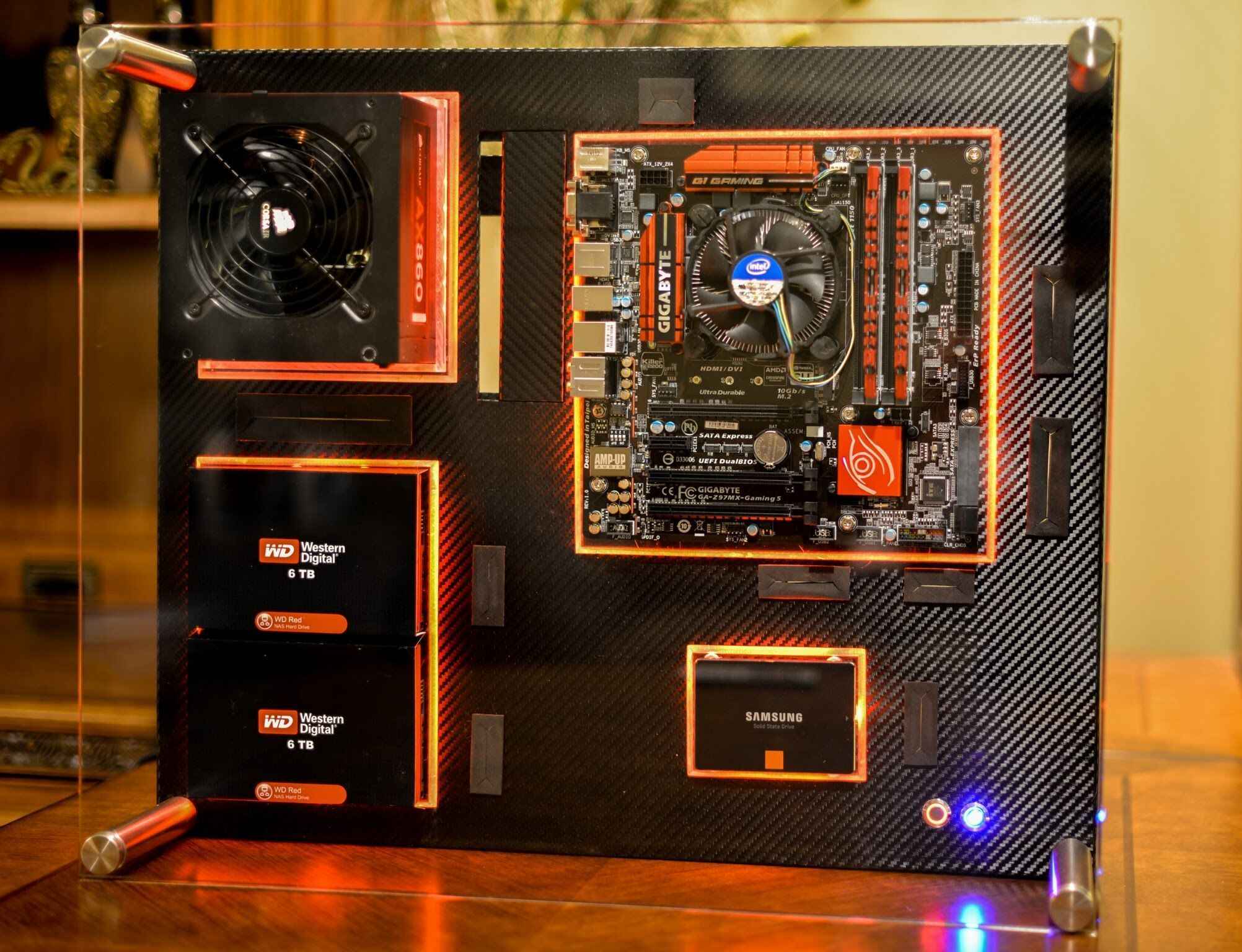Introduction
Welcome to our guide on the proper placement of fans in a PC case! When it comes to building and maintaining a high-performance computer, ensuring proper airflow is crucial. The correct fan placement not only helps in keeping your system cool but also improves its overall performance and longevity.
Computer components generate heat during operation, and without effective cooling, this heat can build up and lead to premature wear and tear, reduced performance, and even system failures. That’s why strategically placing fans in your PC case is essential to dissipate heat and maintain optimal temperatures.
In this article, we will discuss the importance of proper fan placement and explore the various areas within your PC case where fans can be installed. We’ll also provide some tips to help you make the most out of your fan configuration.
Whether you’re a seasoned PC builder looking to optimize your system’s cooling or a newbie embarking on your first build, understanding fan placement is crucial for a well-functioning and efficient computer.
So, without further ado, let’s dive in and explore the key aspects of fan placement in a PC case to help you achieve optimal airflow and cooling.
Importance of Proper Fan Placement
Proper fan placement in a PC case is vital for maintaining optimal system temperatures and preventing heat-related issues. When components such as the CPU and GPU operate at high temperatures for extended periods, they can lead to reduced performance, instability, and even permanent damage.
Effective fan placement helps to dissipate heat generated by these components, ensuring that they stay within safe operating temperatures. Here are a few reasons why proper fan placement is essential:
- Improved Cooling Performance: Placing fans strategically helps to create a proper airflow path within your PC case. This means that cool air is drawn in from the front or side of the case and directed towards the components that generate the most heat. The warm air is then expelled from the case through exhaust fans. This directional airflow helps keep your components cool and prevents heat buildup.
- Extended Component Lifespan: Excessive heat can significantly impact the lifespan of your PC components. Components that run too hot for extended periods are more prone to failures and may not last as long as they should. By ensuring proper fan placement and maintaining lower temperatures, you can help prolong the life of your components and protect your investment.
- Improved System Stability: Heat can cause instability and crashes in your system, especially during resource-intensive tasks such as gaming or video editing. With proper fan placement, you can maintain lower temperatures and ensure a stable operating environment for your components. This can result in smoother performance and fewer system crashes.
- Reduced Noise: When components get too hot, the fans need to work harder to cool them down. This can lead to increased fan noise as they spin at higher speeds. Proper fan placement allows for efficient cooling, reducing the need for fans to run at maximum speed. As a result, you can enjoy a quieter computing experience.
In summary, proper fan placement plays a critical role in maintaining optimal temperatures, prolonging component lifespan, ensuring system stability, and reducing noise levels in your PC. The next sections will explore specific areas within the PC case where fans should be placed for maximum effectiveness. Let’s move on to discuss front intake fans.
Front Intake Fans
Front intake fans are positioned at the front of the PC case and are responsible for pulling fresh, cool air into the system. These fans play a crucial role in ensuring a steady flow of cool air towards the components that generate the most heat, such as the CPU and GPU.
When installing front intake fans, there are a few factors to consider:
- Number of Fans: Depending on your PC case’s design, you may have the option to install multiple front intake fans. The number of fans you can install will vary, so it’s essential to check your case specifications. Having multiple front intake fans allows for greater airflow, which can help improve cooling performance.
- Positioning: Ideally, front intake fans should be positioned at the lower part of the front panel, so they can draw in cool air from outside the case. This placement ensures that the cool air is directed towards the CPU and GPU, where it is needed the most. The fans should also have ample clearance to avoid obstruction from cables or other components.
- Fan Orientation: Front intake fans typically have an arrow or marking indicating the direction of airflow. Make sure to align the fans in the correct orientation for optimal cooling. In most cases, the arrow should be pointing towards the interior of the case.
- Dust Filters: It’s common for PC cases to feature dust filters at the front panel. These filters help prevent dust and debris from entering the case and accumulating on components. When installing front intake fans, ensure that the dust filters are in place to maintain a clean and dust-free system.
By properly installing front intake fans, you can ensure a constant supply of cool air to keep your components running at optimal temperatures. This helps prevent overheating and maintains the overall stability and longevity of your PC. Now let’s move on to exploring the significance of top mount fans in your PC case.
Top Mount Fans
Top mount fans provide an additional avenue for exhaust and can contribute significantly to the overall cooling efficiency of your PC case. These fans are typically installed at the top of the case, and their main function is to expel warm air that rises from the components.
Here are some key considerations when it comes to installing top mount fans:
- Number of Fans: Depending on your PC case’s design and available mounting points, you may have the option to install one or more top mount fans. Similar to front intake fans, having multiple top mount fans can improve overall airflow and cooling performance.
- Positioning: The exact positioning of top mount fans will depend on your case’s configuration. In most cases, it’s recommended to place the fans towards the rear of the case, near the CPU area. This allows for efficient expulsion of warm air, preventing heat buildup around critical components.
- Airflow Direction: Top mount fans typically function as exhaust fans, expelling warm air from the case. Ensure that the airflow direction of these fans is set to push air out of the case. You can check for arrow markings on the fans or refer to the fan specifications for guidance.
- Fan Size: It’s essential to consider the size of the top mount fans in relation to your PC case. Make sure that the fans you choose are compatible with the available mounting points and do not interfere with other components or obstruct the GPU clearance.
- Control Fan Speed: Some PC cases or motherboard designs may offer fan speed control options. Adjusting the speed of your top mount fans can help strike a balance between cooling performance and noise levels. Higher fan speeds can improve cooling but may lead to increased noise, while lower speeds can reduce noise but may impact cooling efficiency.
Properly implementing top mount fans in your PC case aids in expelling warm air, promoting better overall airflow, and reducing heat buildup. This ensures that your components work under optimal conditions and reduces the risk of thermal throttling or performance degradation. Now, let’s explore the significance of rear exhaust fans in PC cooling.
Rear Exhaust Fans
Rear exhaust fans are positioned at the rear of the PC case and work in tandem with front intake fans to maintain a proper airflow path. These fans play a crucial role in expelling warm air from the case, preventing heat buildup and maintaining lower temperatures.
Consider the following factors when installing rear exhaust fans:
- Number of Fans: Many PC cases have provisions for a single rear exhaust fan. However, some larger or high-performance cases may allow for the installation of multiple rear exhaust fans. The number of fans you choose to install will depend on your specific PC case and cooling requirements.
- Positioning: Rear exhaust fans are typically positioned at the rear of the case, near the CPU and GPU areas. This placement allows for the efficient expulsion of warm air generated by these components. Ensure that the fans are aligned with the rear fan mount and have proper clearance from cables and other components.
- Fan Orientation: Rear exhaust fans should be oriented to push air out of the case. Check for arrow markings on the fans or refer to the specifications to ensure the correct airflow direction. The goal is to expel warm air from inside the case and maintain a steady flow of cool air from the front intake fans.
- Fan Size and Speed: Consider the fan size in relation to the rear fan mount in your PC case. Ensure that the fan you choose is compatible and fits properly. Additionally, keep in mind the fan’s speed and its impact on noise levels. Adjusting fan speeds can help strike a balance between cooling performance and noise reduction.
- Positive Pressure: Implementing rear exhaust fans contributes to maintaining positive air pressure inside the case. Positive pressure occurs when the intake airflow exceeds the exhaust airflow, preventing dust and debris from infiltrating through any gaps in the case. This can enhance system cleanliness and reduce the frequency of cleaning maintenance.
By installing rear exhaust fans, you can ensure the efficient expulsion of warm air from your PC case. This helps in maintaining lower temperatures, preventing heat-related issues, and ensuring the smooth operation of your components. Now, let’s move on to discussing the importance of fan placement around the CPU cooler.
CPU Cooler Fans
CPU cooler fans play a critical role in keeping the processor cool, as the CPU is one of the primary heat-generating components in a computer. These fans are typically integrated into the CPU cooler or mounted directly onto it. Proper placement and configuration of CPU cooler fans are essential for maintaining optimal temperatures and preventing thermal throttling or CPU damage.
Consider the following factors when it comes to CPU cooler fans:
- CPU Cooler Type: There are two main types of CPU coolers: air coolers and liquid coolers. With air coolers, the fan is mounted directly onto a heatsink, which dissipates heat from the CPU. Liquid coolers consist of a radiator and pump, with fans attached to the radiator. Ensure that you select a CPU cooler that is compatible with your case and provides sufficient cooling for your CPU model.
- Fan Orientation: The orientation of the CPU cooler fan can impact cooling efficiency. In most cases, it’s best to position the fan to blow air towards the heatsink or radiator. This forces cool air to pass over the heatsink or radiator fins, absorbing heat and carrying it away from the CPU. Check the manufacturer’s instructions or documentation for specific guidance on fan orientation for your CPU cooler model.
- Fan Speed and Control: CPU cooler fans often come with variable speed settings or fan control options. Adjusting the fan speed can help strike a balance between cooling performance and noise levels. Higher speeds provide more cooling, but they may generate more noise. Lower speeds can reduce noise levels but may impact cooling efficiency. Find the optimal fan speed setting that suits your cooling needs and noise tolerance.
- Cable Management: Ensure proper cable management around the CPU cooler fans to avoid obstructing airflow. Tidy cable routing can help maintain a smooth and unobstructed path for air to flow through the cooler. Use cable ties or routing options provided by your case to organize cables and prevent them from interfering with the CPU cooler fans.
- Maintenance: Regularly cleaning the CPU cooler fans and heatsink is vital to maintain optimal performance. Over time, dust and debris can accumulate on the fan blades and heat sinks, reducing airflow and impeding cooling efficiency. Use compressed air or a soft brush to remove dust and ensure that the fans are clean for efficient cooling.
Proper placement and configuration of CPU cooler fans are essential for effective CPU cooling and system performance. Following the guidelines provided by the CPU cooler manufacturer and considering factors like fan orientation, speed control, cable management, and maintenance will help you keep your CPU operating at a safe temperature. Now, let’s move on to discussing the importance of fan placement around the GPU cooler.
GPU Cooler Fans
GPU cooler fans are an integral part of graphics card cooling systems. They are responsible for dissipating heat generated by the GPU, ensuring that it operates at optimal temperatures during demanding tasks such as gaming or rendering. Proper placement and configuration of GPU cooler fans are crucial for maintaining GPU performance and preventing overheating.
Consider the following factors when it comes to GPU cooler fans:
- Fan Orientation: GPU cooler fans are typically positioned directly on the graphics card, either as one or multiple fans. The orientation of these fans is designed to blow air directly onto the heatsink or cooling fins. This airflow helps in dissipating heat and maintaining lower GPU temperatures. Ensure that the GPU cooler fans are properly aligned and facing the correct direction.
- Fan Speed and Control: GPU cooler fans, like CPU cooler fans, often come with variable speed settings or fan control options. You can adjust the fan speed to balance cooling performance and noise levels. Depending on your preferences and cooling requirements, you can set the fan speed higher for better cooling or lower to reduce noise output.
- Cable Management: Similar to CPU cooler fans, proper cable management around GPU cooler fans is crucial to maintain unobstructed airflow. Ensure that cables are routed neatly and do not obstruct the GPU cooler fans. This allows for optimal cooling efficiency and prevents any potential interference with the fans’ operation.
- Maintenance: Regularly cleaning the GPU cooler fans and the graphics card itself is essential for optimal performance. Dust and debris can accumulate on the fan blades and GPU heatsink over time, impacting airflow and cooling capabilities. Use compressed air or a soft brush to remove dust and maintain clean and efficient GPU cooling.
- Aftermarket Fan Configurations: Depending on your graphics card model, you may have the option to customize your GPU cooler fan configuration. Some aftermarket cooling solutions offer alternative fan designs or additional fans for better cooling performance. If you opt for aftermarket GPU cooling, ensure compatibility with your graphics card and follow the manufacturer’s instructions for installation.
Properly positioning and configuring GPU cooler fans is vital for maintaining optimal GPU temperatures and maximizing performance. Taking into account factors such as fan orientation, speed control, cable management, and regular maintenance will help ensure that your graphics card stays cool during intense gaming or demanding tasks. Now, let’s move on to discussing some additional considerations for fan placement in your PC case.
Additional Considerations for Fan Placement
While front intake fans, top mount fans, rear exhaust fans, CPU cooler fans, and GPU cooler fans are key components of an effective cooling system, there are several additional considerations to keep in mind when it comes to fan placement in your PC case. These considerations can further improve airflow and cooling performance. Let’s explore them:
- Side Intake Fans: Some PC cases have mounting points for side intake fans. These fans, when strategically placed, can provide additional cool air directly to the graphics card or other components. Side intake fans are particularly beneficial when your graphics card lacks a direct cooling solution.
- Bottom Intake Fans: In certain PC cases, bottom intake fans can be installed to draw in cool air directly from underneath the case. These fans are especially useful if your case sits on a surface that restricts airflow from the bottom, such as a carpet. Bottom intake fans help ensure a steady supply of fresh air for improved cooling.
- Case Fan Size and Placement: Consider the size and placement of case fans when selecting or upgrading them. Larger fans, such as 120mm or 140mm, generally provide better airflow with lower noise levels compared to smaller fans. Distributing case fans throughout the case strategically helps maintain overall airflow and prevents hotspots.
- Fan Curve and PWM Control: Take advantage of fan curve settings and PWM (Pulse Width Modulation) control options in your motherboard or fan controller. These features allow you to set specific fan speed profiles based on temperature thresholds. By customizing the fan curve, you can tailor cooling performance to match your system’s needs and minimize noise levels.
- Consider Positive Pressure: Maintaining positive air pressure inside the PC case can help minimize the entry of dust and debris. This can be achieved by ensuring that the sum of the intake fan airflow exceeds that of the exhaust fans. Positive pressure encourages air to exit the case through designated exhaust points rather than through unfiltered openings.
- Monitor and Adjust Fan Speeds: Keep a close eye on your system’s temperatures and adjust fan speeds as necessary. Monitoring software or BIOS settings can provide real-time temperature readings for different components. Adjusting fan speeds can help strike a balance between cooling performance and noise levels, ensuring that your system operates optimally without excessive noise.
By taking into account these additional considerations for fan placement, you can optimize cooling performance and maintain lower system temperatures. Each PC case may have different configurations and requirements, so it’s essential to consider the specific characteristics and requirements of your setup when implementing these strategies.
Now that we’ve explored various fan placement considerations, let’s wrap up our guide to fan placement in a PC case.
Conclusion
Proper fan placement is crucial for maintaining optimal temperatures and maximizing the performance and lifespan of your PC components. By strategically positioning fans throughout your PC case, you can create a steady flow of cool air, expel warm air, and prevent heat buildup. This helps in preventing thermal throttling, instability, and potential damage to your system.
Front intake fans draw cool air into the case, directing it towards components like the CPU and GPU, which generate the most heat. Top mount fans assist in expelling warm air that rises within the case. Rear exhaust fans work in conjunction with front intake fans to maintain proper airflow and expel warm air. CPU cooler fans and GPU cooler fans are dedicated to cooling the respective components, preventing them from overheating.
In addition to these primary fan placements, there are several additional considerations. Side intake fans can provide direct cooling for the graphics card, while bottom intake fans can draw cool air from underneath the case. Selecting the right fan size, optimizing fan curve settings, and monitoring and adjusting fan speeds based on temperature readings are also important factors to consider.
Remember to ensure proper cable management and regular maintenance to prevent obstructions and keep the fans operating at their best. Maintaining positive air pressure can also reduce the entry of dust into the case, keeping the system cleaner and reducing the need for frequent cleaning.
By following these guidelines and considering the specific attributes of your PC case and components, you can optimize airflow and cooling performance, ensure stable operation, and prolong the lifespan of your system. So go ahead, implement the proper fan placement techniques discussed in this guide, and enjoy a cooler and more efficient computing experience.







